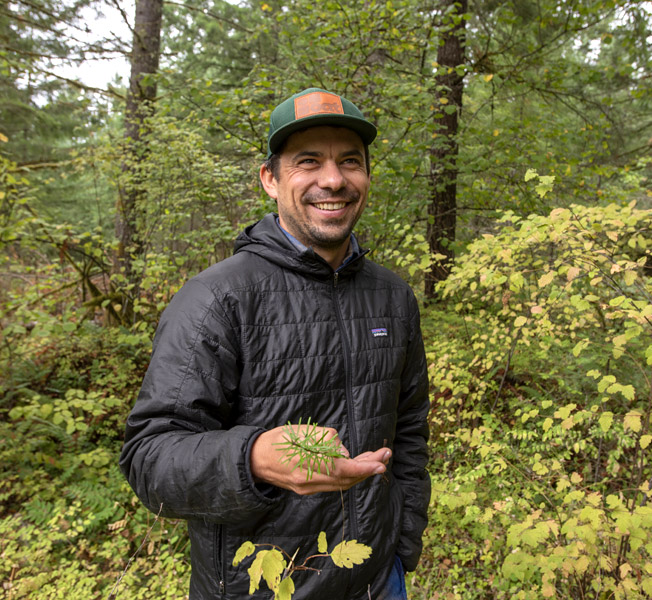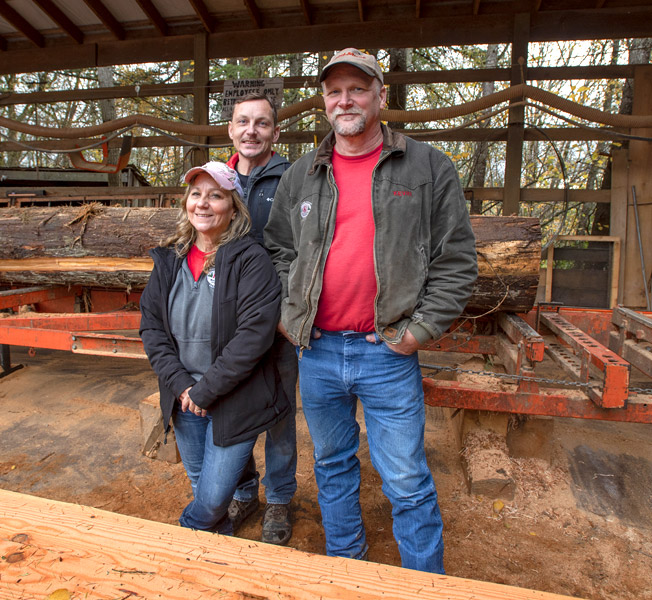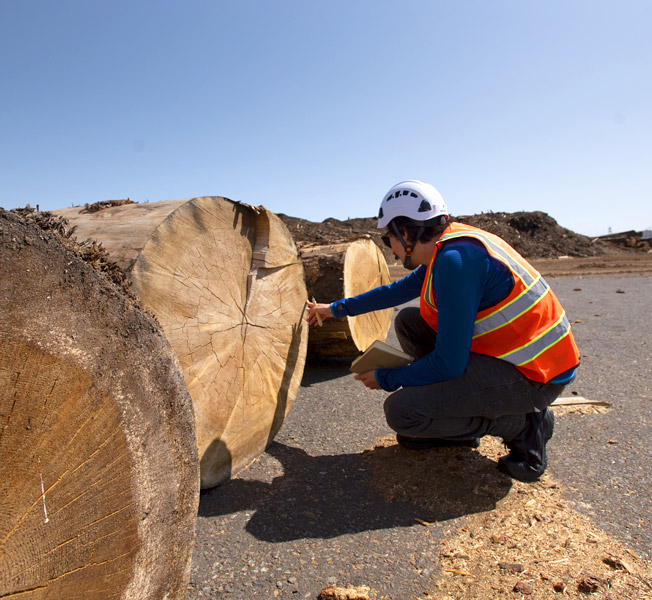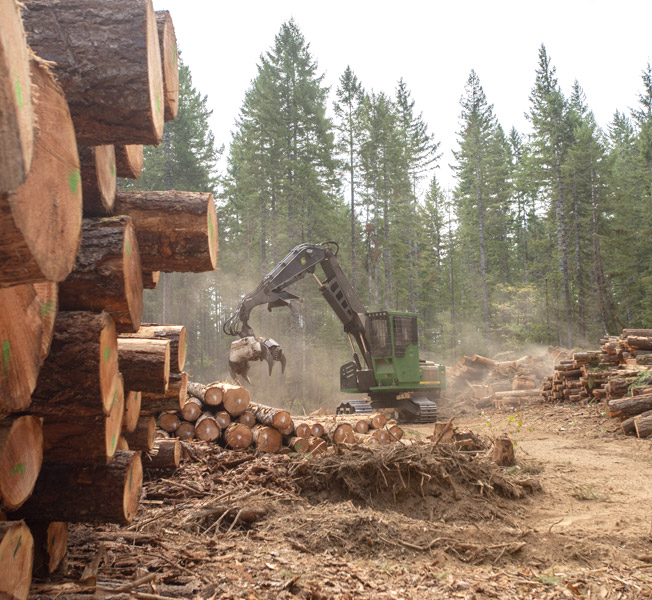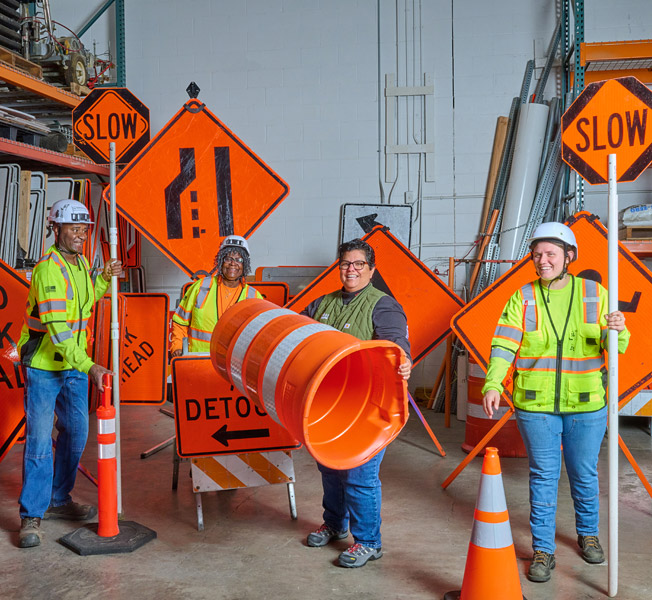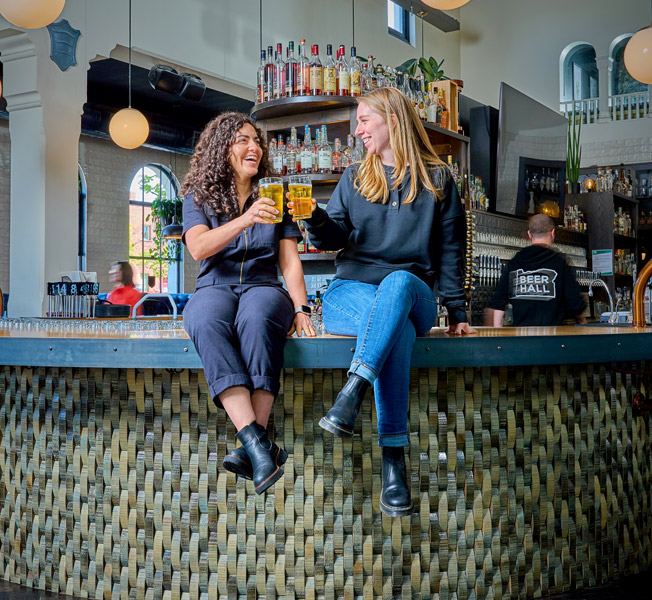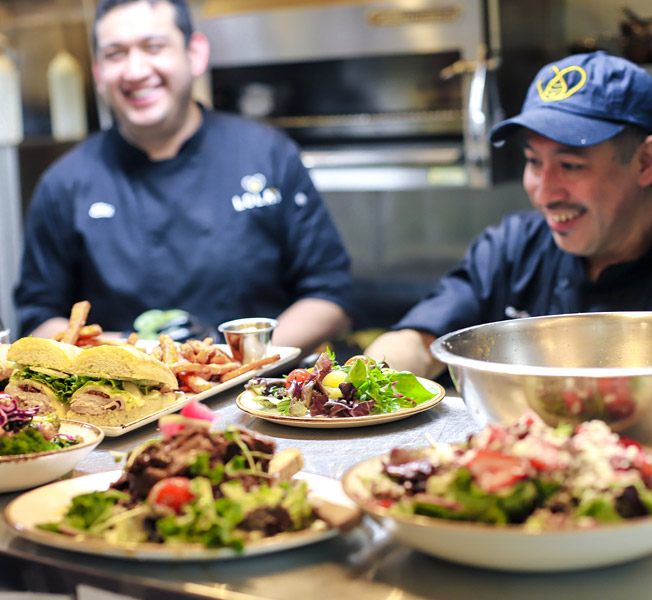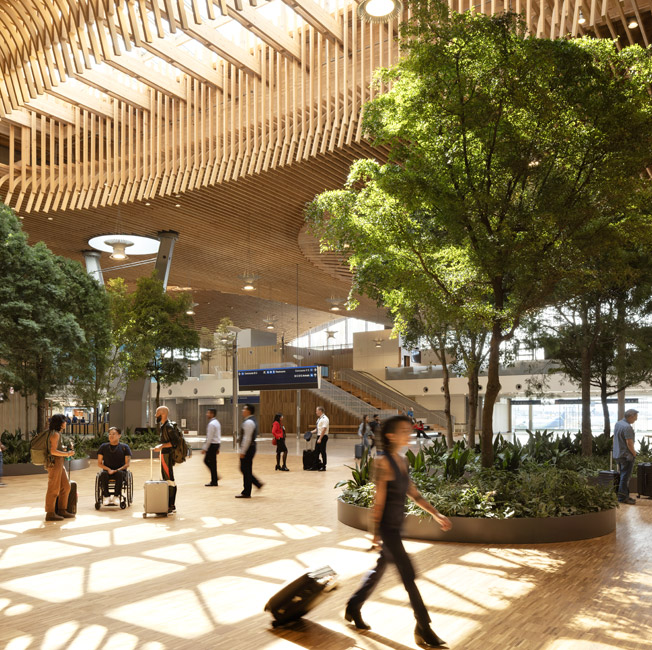A local team of designers wanted the new spaces to feel more like a stroll in a local park and less like a generic shopping mall. That team was led by Sharron van der Meulen and Gene Sandoval — partners at Portland’s own ZGF Architects.
Gene describes the airport “as my Ellis Island,” as he moved here four decades ago from Philippines. He took a lot of pride in approaching the design process, which involved speaking to many people about their sense memories of the region. He’s found it typically involves the forest: “Maybe it’s the light through Douglas firs, the smell of evergreen, the density of the trees.”
That all inspired the concept for an airport you couldn’t build anywhere else: a remarkable wooden roof sourced from ecologically managed forests, undulating across spaces that evoke the natural beauty of the region. The best compliment, Sharron says, would be hearing PDX visitors say, “‘Oh my god, that’s so Oregon!”
But making the spaces feel like the Pacific Northwest required a lot of people to work together in all corners of our region.
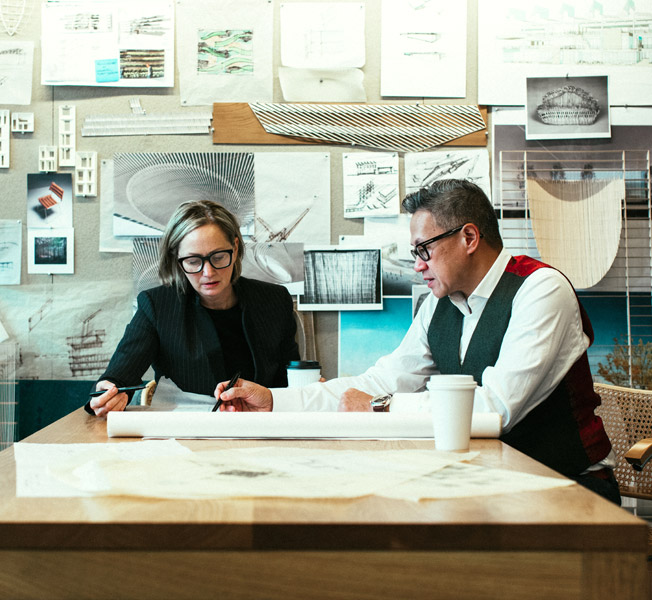
—Sharron van der Meulen, ZGF



